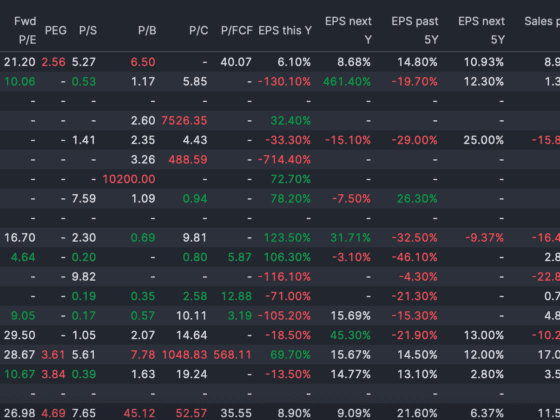Hey there, fellow traders! As someone who’s been navigating the turbulent waters of financial markets for decades, I’ve encountered and experimented with countless trading strategies. Today, I want to dive deep into a strategy that has consistently proven its worth: the Mean Reversion Trading Strategy. Understanding means reversion can be a game-changer if you’re just starting out or looking to refine your trading tactics.
By the end of this blog post, you’ll not only grasp the fundamentals of mean reversion but also learn actionable steps, the benefits of this approach, and the common pitfalls to watch out for. Buckle up, and let’s get started!
What is the Mean Reversion Trading Strategy?
The mean reversion trading strategy is based on a simple yet powerful concept: prices tend to revert to their historical average over time. Imagine you’re at a party where everyone is dancing wildly, but the crowd returns to the centre of the room every now and then, creating a sort of “mean” position. In financial markets, this translates to the idea that assets will move away from their average price but eventually return.
My Personal Encounter with Mean Reversion
I remember my early trading days when I first stumbled upon mean reversion. I was sceptical—after all, how could prices constantly swing back to a specific point? However, after some deep research and trial and error, I found that mean reversion wasn’t just a theory but a practical strategy that could be reliably applied.
7 Steps to Master Mean Reversion Trading
1. Identify the Mean
The first step in any mean reversion trading strategy is determining an asset’s “mean” or average price. This can be achieved using various methods, such as:
- Simple Moving Average (SMA): A straightforward average price calculation over a set period.
- Exponential Moving Average (EMA): This gives more weight to recent prices and provides a more dynamic mean.
In my experience, the SMA is often a good starting point, especially for beginners. It’s less sensitive to short-term fluctuations and provides a clearer view of the average.
2. Analyze Historical Data
Once you’ve identified the mean, analyze historical data to understand how frequently and how far the price deviates from this average. This historical analysis helps you set realistic expectations about price behaviour.
I recall a particular trade where understanding historical data helped me anticipate a significant price bounce. Knowing the asset’s typical behaviour, I could make an informed decision and capitalize on the opportunity.
3. Set Entry and Exit Points
Define your entry and exit points based on how far the price deviates from the mean. For instance, you might decide to buy when the price is 10% below the mean and sell when it’s 10% above. Setting these parameters helps manage risk and lock in profits.
When I first started, I used broader deviations, but I learned that tighter controls often yielded better results over time. Finding the right balance for your trades is key.
4. Use Technical Indicators
Technical indicators can provide additional confirmation for your trades. Indicators like the Relative Strength Index (RSI) or Bollinger Bands can signal when an asset is overbought or oversold, enhancing your mean reversion strategy.
For instance, if the RSI shows an overbought condition while the price is significantly above the mean, it could be a strong sell signal. Combining indicators with mean reversion strategies has often given me a clearer picture.
5. Monitor Market Conditions
Market conditions can influence mean reversion. Economic events, earnings reports, or geopolitical news can cause prices to deviate more significantly from their average. Always be aware of these factors to avoid unexpected outcomes.
I remember a time when market news led to extreme volatility. I avoided some costly mistakes by keeping an eye on the news and understanding its potential impact.
6. Risk Management
As with any trading strategy, risk management is crucial. Determine how much of your portfolio you’re willing to risk on a single trade. Setting stop-loss orders can help protect your capital if the price does not revert as expected.
I’ve always found that using stop-loss orders provides peace of mind and keeps my trading strategy disciplined. It’s a safety net that helps me stick to my plan.
7. Evaluate and Adjust
Finally, regularly review your trades to evaluate the effectiveness of your mean reversion strategy. Look at what worked and what didn’t, and adjust as needed. Continuous learning and adaptation are essential in trading.
After each trade, I analyze the results and refine my approach. This iterative process has been instrumental in improving my trading outcomes.

Benefits of Mean Reversion Trading
- Consistency: Mean reversion works well in stable markets where prices oscillate around a mean.
- Predictability: Historical data often provides reliable insights into how prices behave relative to the mean.
- Risk Management: It allows for predefined entry and exit points, making it easier to manage risk.
Challenges of Mean Reversion Trading
- Market Trends: In trending markets, mean reversion can lead to losses since prices may not revert as expected.
- Overfitting: Relying solely on historical data can sometimes lead to overfitting, where the strategy works well in the past but fails in future conditions.
- Execution: Identifying the right means and setting appropriate parameters can be challenging and requires experience.
The mean reversion trading strategy, focusing on returning prices to their average, offers a systematic approach to trading that can be highly effective when applied correctly. While its benefits include consistency and predictability, it also comes with challenges that require careful consideration and risk management.
Remember that continuous learning and adaptation are key as you embark on or refine your journey with the mean reversion strategy. If you’ve enjoyed this deep dive into mean reversion, I encourage you to [download our detailed trading guide] for more insights and strategies.
Thanks for joining me in exploring the mean reversion trading strategy. Until next time, happy trading!







